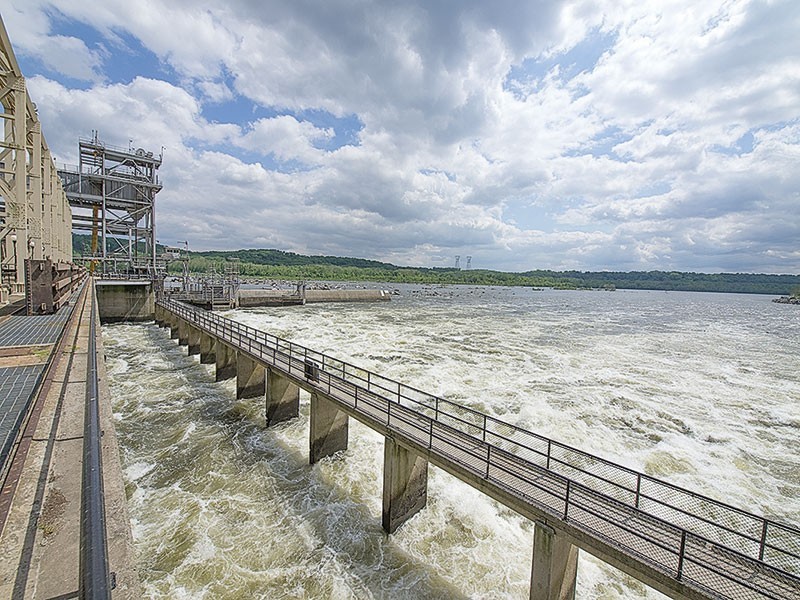We’ve had a difficult year on Chesapeake Bay. And not everyone understands how this relates to marine insurance coverage when your boat hits debris in the water.
Now, in the aftermath of Hurricane Florence, it is even more relevant to clear up any confusion.
In Annapolis and elsewhere in this region, it’s not been a cruiser-friendly summer, with record inches of rain, high temperatures, and stormy weather for much of the summer. I don’t know anyone who used their boat anywhere near normal, many with less than a dozen hours on the engine. If it wasn’t raining, it was blistering hot and disgustingly humid. If this continues, I am seriously considering finding a better place to spend my summers, such as up to the St. Lawrence area, although friends said it was hot even on the Rideau Canal in Canada.
Global warming?
Anyway, at the top of Chesapeake Bay is the Susquehanna River, which runs south over 460 miles from Cooperstown, New York, through the state of Pennsylvania, then into Maryland and Chesapeake Bay. Separating the bottom of the river from the bay is Conowingo Dam, a huge hydroelectric dam that produces 55 percent of Maryland’s renewable energy. The facility has been in operation since 1928, and its reservoir traps the debris and junk that gets washed down 460 miles across three states.
According to the Baltimore Sun, this year has seen 10 times the amount of rain and stormy weather across these states, and the reservoir at the dam has been at its highest levels on record. So periodically this summer, dam operators opened the flood gates to relieve the high levels of water, releasing all kinds of debris that accumulated from the length of the Susquehanna. The result has been ongoing horrible debris fields in Chesapeake Bay.
While the company managing the dam removed almost 600 tons of debris this season before the dam gates were opened, the extent of the junk in the water has overwhelmed the imagination. Furniture, trees, huge branches, plastic waste, wheels and tires…a mess floating on Chesapeake Bay.
In addition to the environmental issues this debris bring to the health of Chesapeake Bay, it has greatly increased the risks to marine navigation. Incidents of boats running into logs and tree trunks has become real, and a definite hazard. And it continues to happen, as the rains continue, requiring increased frequency of high water release. The gates were opened again a few days ago, and people were talking yesterday about how difficult it is to enjoy boating without serious risk. It is the new normal now when someone says they went out on their boat, the first question is always whether they saw floating debris. The answer for the second half of the season has always been “Yes.”
One couple hit something they never saw while running up the Bay, and destroyed all four, counter-rotating propellers on their powerboat’s pod drives. Friends coming back from Baltimore’s Inner Harbor said it was the worst trip ever, as it took hours, carefully threading through debris fields so thick that the intensity of what should have been a short trip home was exhausting. Everyone stood on constant watch as they traveled at slow speed, constantly changing direction to zigzag through junk barely visible in the thick haze and humidity.
This is pleasure boating???
We all agree how unfortunate the situation is, and many wonder just what can be done about it. Unfortunately, it is difficult to point a finger at any one group or company or facility. There is no easy solution.
Now, in both North and South Carolina, we have this in spades on many of the waterways and lakes, not just the ICW. The flood waters were beyond anything I could have imagined.
Seeing the before and after pictures of the Cape Fear River in Fayetteville, North Carolina takes a few seconds to comprehend what you are looking at. That river rose 61.4 feet in Fayetteville. One can only imagine the damage and debris in the aftermath of such flooding.
How much water does it take to make a river rise over 61 feet? And now what is left floating or submerged?
In discussing navigating in debris-laden waters over a group dinner, the question of marine insurance came up and there was no agreement about whether the marine insurance companies would cover damage from this kind of waterway hazard. For some reason the majority of our group felt boaters were left to pay the repair and towing bills, as insurance would not cover it. That sounded wrong to me, so I decided to check it out.
I contacted Michael Pellerin, VP and Director of Marine Insurance at BoatUS. Mike pretty much knows everything there is to know about marine insurance, and BoatUS is no lightweight when it comes to disaster relief and insurance coverage from hurricanes and the kind of debris risks we’re facing in Chesapeake Bay this year.
Mike’s response was short and sweet, and sums up what I believe is the heart of the matter.
“Striking a submerged object is a covered loss and is one of the most common loss causes that we see. A deductible and any applicable depreciation may be applied, however.”
So the folks with the destroyed props no doubt will have the repairs covered by insurance. Running on a waterway that has potential threats just under the surface, it’s comforting to know your insurance policy will cover damage suffered. That still doesn’t make it a fun experience, and it is yet another reason most of us scaled back our boating this season. Who needs to deal with this, on top of the rain, heat, and humidity?
I want to thank Mike Pellerin, as usual, for being my go-to guy when it comes to marine insurance questions. BoatUS is one of the big players in the boat insurance game.
Have a great week.











